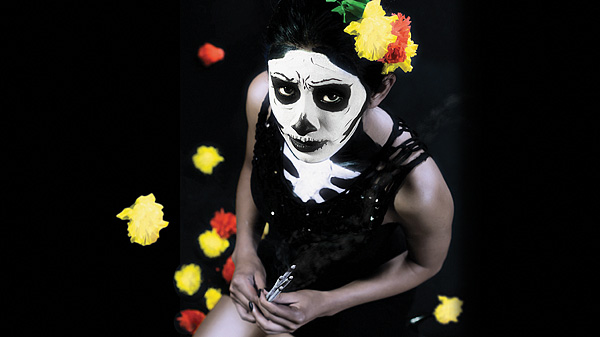
Dark Tourism: Today’s tourists want gore and disorder when they have time to kill
Okay, hand on heart, where would you rather visit – the Great Wall of China or the graveyard where Jim Morrison, the iconic lead singer of The Doors, is buried? Similarly, which one of these tops your travel itinerary – the ornate clocks of the Czech Republic or the glow-in-the-dark ruins of Chernobyl? Still unsure? How about this – Bali’s most beautiful beach or the eerie, abandoned huts of the Auschwitz-Birkenau Concentration Camp?
If your answer, in every instance, was largely the latter, you are not necessarily a sojourning sociopath-to-be. No, it could just be that you’re an early advocate of one the vacation industry’s most visceral trends – dark tourism.

Despite such apparently morbid motivations, dark tourism does not necessarily stem from some wholly unhealthy impulse. Maintaining it is the manifestation of a very natural fascination with mortality, Professor John Lennon, the Director of the Glasgow Caledonian University’s Moffat Centre for Travel and Tourism Business Development, says; “Dark tourism, like our dark history, occupies an important part of our understanding of what it is to be human. Essentially, it is motivated by a desire for actual or symbolic encounters with death.”
For those dead-set on actual or symbolic encounters, there are – perhaps worryingly – an ever-expanding number of options on offer. And for those who find themselves particularly execution excursion-minded, where better to start than Colombia, the 50 million-strong South American country that, not so long ago, held the dubious accolade of being the world’s most violent nation.

A relatively poor country compared to the massive, hedonistic US market next-door, drugs – particularly cocaine – was its perennial problem. Once the world’s largest producer and distributor of this Class A narcotic, its streets ran red with the blood of rival drug gangs, supposed informers, nosy journalists, incorruptible government officials and law enforcement operatives.
For those looking for a first-hand experience of the country’s corpse-heavy past, Bogotá – the national capital – is the place to start. Here you can hire a drug baron doppelganger with a pitch-perfect take on Pablo Escobar, the most infamous member of the country’s narco nobility, who will drive you around the city’s most notorious landmarks, all the while making – apparently – pretend drug deals on his hefty retro-’80s phone.
Once sated by your exploration of Colombia’s opiate-addled past, you could head to the 3,000km-distant Mexico. Time it right and you could even arrive on the eve of the Day of the Dead, which, despite its name, actually spans a 72-hour period – 31 October-2 November. A decidedly ghoulish affair, it’s a time when locals pay their respects to the recently (and not so recently) departed, celebrate their lives and acknowledge the inevitability of death. This, however, is not an occasion for quiet reflection and sedate remembrance.

Defending the apparent jollity of the festival, Andrea Bentanzos, a Mexico City-based tourist guide, said: “The deceased would be insulted if we merely mourned them. Death is not the end – it’s just the journey to the next stage of life and this is the time we feel the departed’s spirits most keenly.”
For those not wanting to venture beyond Asia in search of a little spooky sightseeing, then one of the destinations that has only relatively recently acquired otherworldly status is Fukushima, the Japanese city that was at the epicentre of the earthquake, tsunamis and subsequent nuclear meltdown that saw the world catch its breath back in 2011.
At the heart of this was the Fukushima Daiichi Nuclear Power Plant, a facility that, eight years on, is still highly radioactive and subject to a massive ongoing decontamination operation. Despite this, those curious – or foolhardy – enough can take a tour of the infamous installation.

Well before you set foot within its potentially-lethal perimeter, you have to sign a lengthy waiver, absolving the operator from any responsibility should you go home glowing in the dark. You are then issued your own personal Geiger Counter and bussed into the half-life holiday spot.
From the Fukushimi Daiichi Nuclear Power Plant to Pablo Escobar’s plush prison, the dark side of the world has come to the fore, with many – consciously or unconsciously – aiming to leverage their leisure time to get to grips with humanity’s less pure impulses. Hopefully, they’re coming away with a measured repulsion to mankind’s baser urges and not with a newly-perfected roadmap for atrocities of their own
Text: Robert Blain







